Last updated on January 25th, 2024
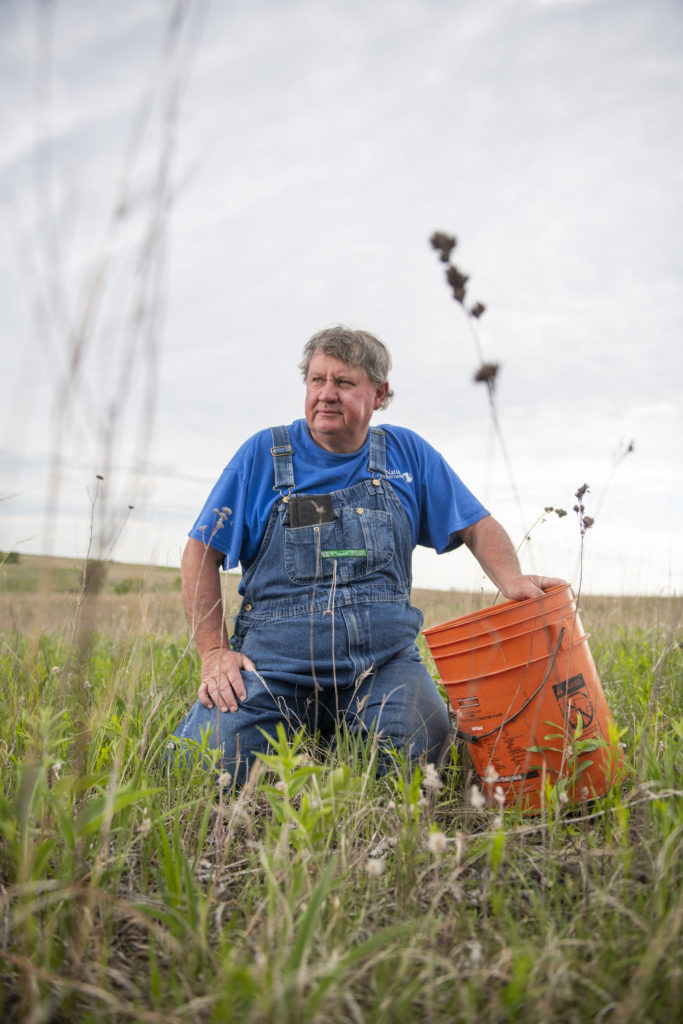
© Dan Videtich/Courtesy TNC
What is a typical day for you?
Mother Nature determines everything: what grows, what produces seed. You have to first go out and find big populations of native plants. Road banks, remnant prairies, old cemeteries—that’s where I look. And when I see plants blooming, I find out what they are and then I flag it.
What makes Dunn Ranch Prairie an important place to protect?
Prairie plants are deep-rooted plants. They store carbon in their roots, which can be more than 15 feet deep. The prairie is like a huge sponge. When it rains, [that sponge] soaks up water and then slowly lets it back out of the hillsides into the streams. In our streams, we have Topeka shiner minnows [an endangered species], and they have to have very clean water. The prairie helps the water, the soil health, the wildlife, the pollinators. There’s so much that it does. At Dunn Ranch, there’s more than 1,000 acres of native prairie that have never been plowed. It was majorly overgrazed, so it needed a lot of restoration and rest, but that was the start. There’s less than 4% of the tallgrass prairie left in the United States so having such a big, unplowed portion here was a rare thing to find.
You grew up not far from Dunn Ranch. What got you interested in conservation and ecology?
I’ve lived here in Harrison County my whole life. And I’ve always loved nature. Everything about it. It doesn’t matter whether it’s a bug, a plant, an animal. As a little kid, my dad would set me outside and say, “Look at him, he’s just listening to everything.” But I never knew anything about native plants until I started at The Nature Conservancy and started this role of seed collecting and prairie restoration.
To me, [a native plant] was a weed. And that’s how most people think of them—as weeds. But they’re really interesting if you take the time to stop, look, listen, smell. It’s amazing what’s out there. I’ve learned a lot by doing this. I never would have thought to go to an old cemetery to look for native plants. But most old cemeteries have an area that’s never been row-cropped or grazed or used to this day. And that is remnant prairie.
So you’re gathering seeds not just from Dunn Ranch sites but from the surrounding area.
Within 100 miles is considered native. That’s the ecotype.
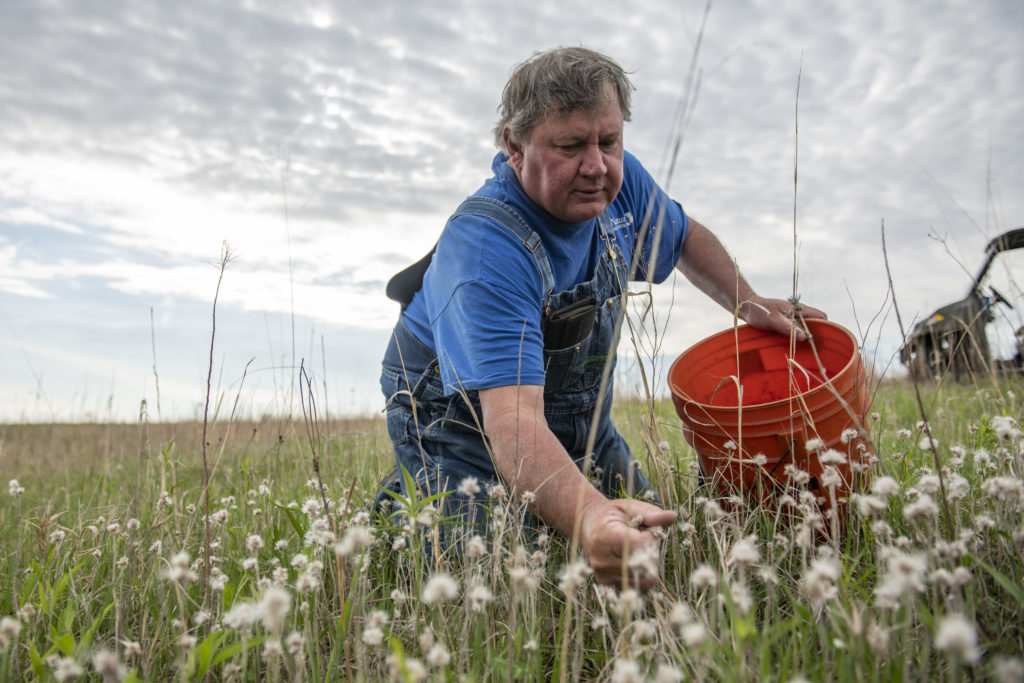
How do you keep all that knowledge stored? Is it all in your head? Or do you have maps or GIS systems that actually plot where large populations of important plants are?
I kept it in my head for years. But now we’ve made a map with GPS locations so if somebody needed to find a large population of a plant, they would have locations of where to go look for it. And then I have a list of when a plant blooms and when I start hand-collecting the seed. For instance, this year is a late spring. We’ve had a lot of cool weather. Field cat’s-foot is one that’s already come and gone. Normally, I collect Field cat’s-foot right around May 1. This year I collected it around May 15. So I can figure the rest of the plants throughout the year are going to be close to a week to 10 days later than normal.
Why is it beneficial to harvest native seed by hand?
That’s the only way you can do it. Field cat’s-foot only gets 5 or 6 inches tall. The way I harvest it is I use a push lawn mower with a bagger on it. I set it as high as it’ll go, and I just mow over it, and the seed is so light and fluffy it just goes up in the bag. I’ve come up with several things over the years to make the harvest as simple as I can, because when you’re out there, and it’s 100 degrees, and you’ve got 75% humidity, and you’re on your hands and knees, and you’re looking for a seed that’s itty-bitty, it’s pretty tough going.
I read that you collect as much as 800 pounds of seed in a season.
By hand, yes. And then we also mechanically harvest. I have a combine. It’s an R-52 Gleaner combine, and it’s got a 22-foot rice stripper head on it. It knocks the seed off the plants; it don’t cut ’em. I go out in the fall when things are starting to dry a little bit, or when I find really big concentrations of seed. I might combine anywhere from 30 to 40 species all at one time.
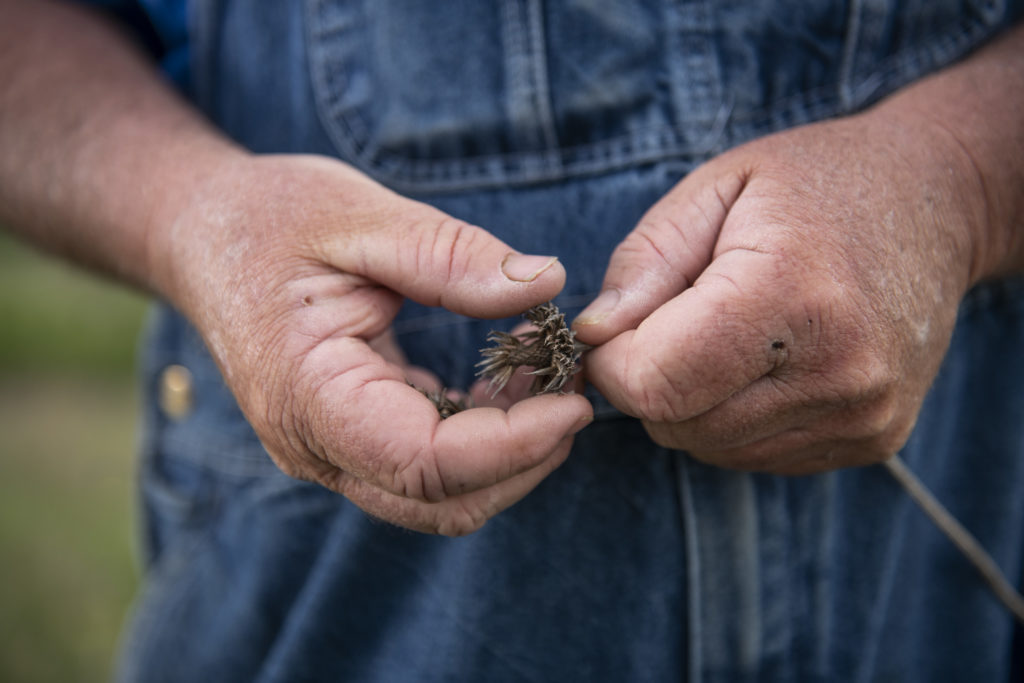
© Dan Videtich/Courtesy TNC
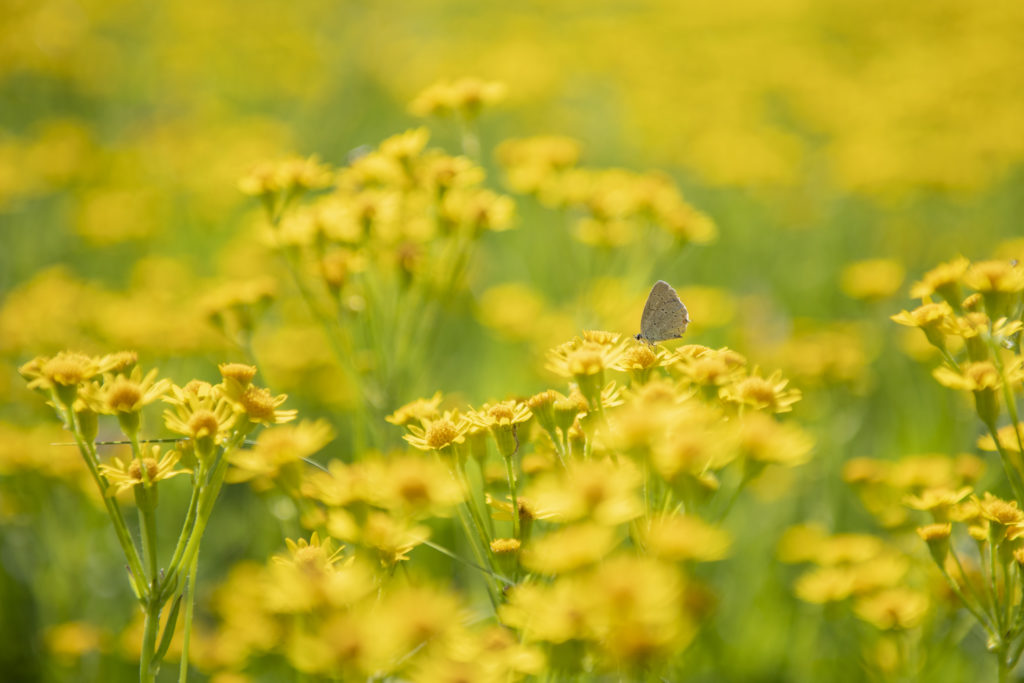
© Dan Videtich/Courtesy TNC
In addition to grazing Dunn Ranch with a bison herd, you use prescribed burns to maintain the prairie. Can you explain a little bit how fire benefits prairie plants?
There are species of plants that you do not see unless you burn. Prairie blazing star, for instance. If you go several years without burning, you can look out, and you’d think there is no prairie blazing star out there. And then you can burn that area, and there will be so much blazing star that it’s just a purple sea. It’s beautiful.
What are some of the most interesting plants you’ve encountered in your work?
Bird’s-foot violet has a sticky, sugary substance on the seed. When the seed explodes, the ants take that seed into the ground to lick the sugar off of it and plant the seed. New Jersey tea—if you want New Jersey tea to grow you have to cook it to 180 degrees Fahrenheit before you seed it. There’s so many medicinal plants. Purple coneflower—American Indians used it for toothaches. But my favorite is downy blue gentian because of the color of it. And the rarity.
What is the hardest part of your job?
The hardest part is dealing with Mother Nature. I used to get awfully upset when a native seed would be ready to pick, and we would have one windy day, or one thunderstorm, and that seed was gone. I mean, you just have a [tiny] window, and Mother Nature can take it away. When it comes harvest time, the pressure is on. You gotta get out there and get it when the window is there.
Every month a prairie is like a different place. What is it like to have a job where you’re so connected to those cycles and that seasonality?
It’s really great. I had a volunteer who would come up from Kansas City, which is about 100 miles south of here, every other Tuesday throughout the whole year to help hand-collect seed. And she said it was different every time. There are different plants in bloom, there are different colors. She really noticed a big difference in just a two-week time period.
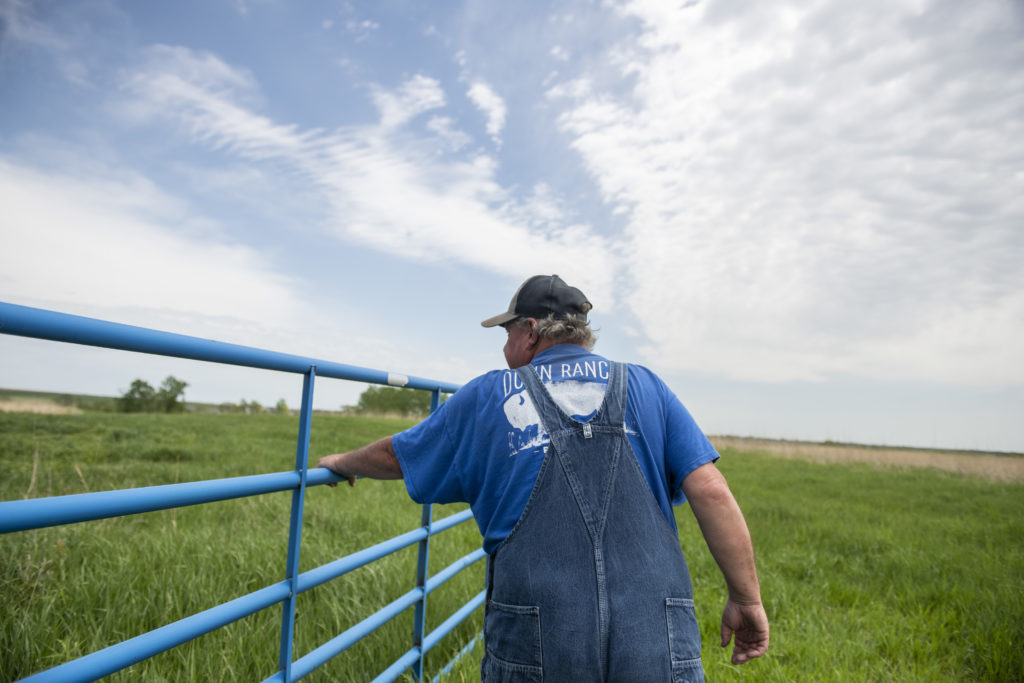
“Native plants are really interesting if you take the time to stop, look, listen, smell. It’s amazing what’s out there.”
KEITH BENNETT
DUNN RANCH Keith Bennett at work at Dunn Ranch Prairie Preserve © Dan Videtich/Courtesy TNC
This article was originally published by The Nature Conservancy in the Fall 2022 issue of Nature Conservancy magazine.
Other stories related to seed collection in the United States:
Gisel Garza: Seed Hunter
It Starts with a Seed: Producing High Quality Native Seed for Restoration in the Willamette Valley
Seeing the Forest for the Seedlings: Challenges and Opportunities in the Effort to Reforest America
